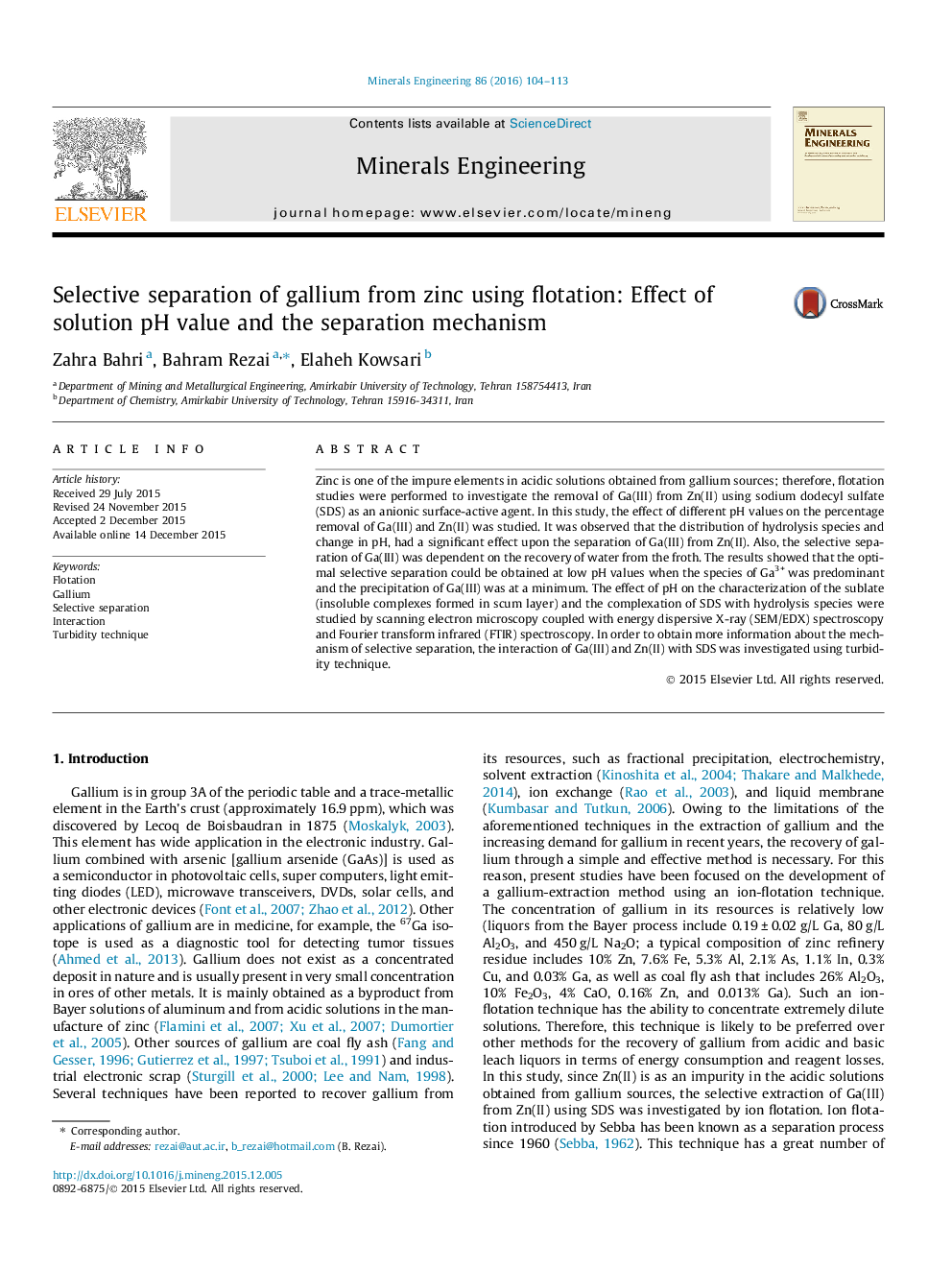| Article ID | Journal | Published Year | Pages | File Type |
|---|---|---|---|---|
| 232814 | Minerals Engineering | 2016 | 10 Pages |
•Optimal selective separation could be obtained when the Ga3+ is predominant.•Co-precipitation of Zn(II) metal with Ga(III) decrease the selective separation.•The solution conditions (pH) affect the micellization process.•The association stoichiometry between SDS and gallium evaluate using turbidity.•The interaction between SDS and Zn(II) is negligible at pH 2.1.
Zinc is one of the impure elements in acidic solutions obtained from gallium sources; therefore, flotation studies were performed to investigate the removal of Ga(III) from Zn(II) using sodium dodecyl sulfate (SDS) as an anionic surface-active agent. In this study, the effect of different pH values on the percentage removal of Ga(III) and Zn(II) was studied. It was observed that the distribution of hydrolysis species and change in pH, had a significant effect upon the separation of Ga(III) from Zn(II). Also, the selective separation of Ga(III) was dependent on the recovery of water from the froth. The results showed that the optimal selective separation could be obtained at low pH values when the species of Ga3+ was predominant and the precipitation of Ga(III) was at a minimum. The effect of pH on the characterization of the sublate (insoluble complexes formed in scum layer) and the complexation of SDS with hydrolysis species were studied by scanning electron microscopy coupled with energy dispersive X-ray (SEM/EDX) spectroscopy and Fourier transform infrared (FTIR) spectroscopy. In order to obtain more information about the mechanism of selective separation, the interaction of Ga(III) and Zn(II) with SDS was investigated using turbidity technique.
